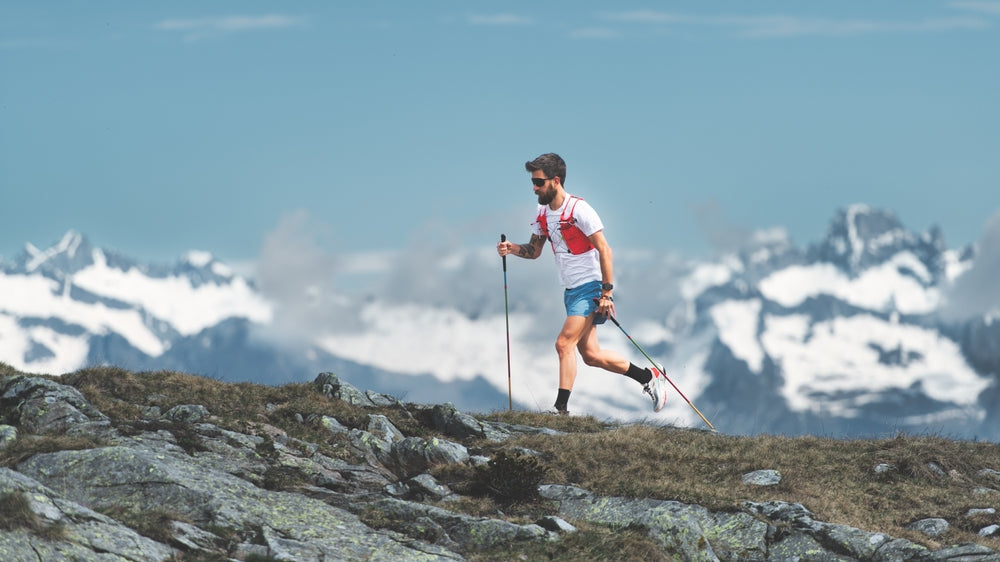
Why Do Athletes Train at High Altitudes?
With the relentless pursuit of peak performance, athletes are constantly seeking innovative methods to gain a competitive edge. Among these, altitude training has emerged as a formidable contender, promising to elevate athletic performance to new heights. But how exactly does this practice improve athletic performance? Let's explore the science and the benefits that make altitude training a game-changer in the world of sports and wellness.
What Happens at Higher Altitudes?
As we move to higher elevations, the world around us undergoes a slow but noticeable shift. The air gets thinner (gas molecules are more spread out), with each breath containing less oxygen for our lungs — roughly 26% less at 8,000 ft compared to sea level. At the same time, temperatures plummet due to lower air pressure. A typical rule of thumb is that temperature will drop about 5.4°F every 1,000 ft you ascend in elevation.
Effects of Altitude on the Body
When the body is exposed to these high-altitude environmental differences, it has to adapt quickly to continue functioning. The lungs are the first to feel the strain and must work harder to extract the reduced oxygen levels from each breath (and breathing also speeds up). At the same time, the heart pumps faster to deliver enough oxygenated blood to the muscles. Muscles themselves begin to operate differently, more efficiently using oxygen to compensate for the decreased supply. Over time, the body initiates a cascade of adaptations, mostly focused on enhancing oxygen transport and utilization.
What This Means for Athletes: What is High Altitude Training?
For athletes, these adaptations can be harnessed to improve performance. High altitude training involves living or training at elevations where oxygen levels are lower (typically above 6,500 ft), prompting the body to adapt in ways that enhance endurance, strength, and recovery (more on the specifics of this below). The principle is simple — by exposing the body to low-oxygen conditions, athletes force their bodies to become more efficient, making them stronger and more resilient when they return to sea level.
Live High, Train Low
While “altitude training” might bring images to mind of intense workouts at high elevations, this is not the ideal way to get the benefits of altitude training. The concept of "live high, train low" has become one of the most popular training strategies as athletes learn more about the biological effects at different altitudes.
The idea is to live at high altitudes, where the body can acclimate and produce more red blood cells, but to train at lower altitudes, where athletes can push themselves harder without the limiting effects of low oxygen. This approach allows them to gain the benefits of altitude adaptation while still being able to perform high-intensity workouts, maximizing training results.
Benefits of Altitude Training: How Does it Affect Athletic Performance?
Before we cover the benefits of adapting to elevation, it's important to recognize that the effects can vary widely from person to person. Factors like genetics, training status, and the specific training protocol used can all play a role in different outcomes. The benefits of altitude training are also not permanent and typically peak 2-3 weeks after returning to sea level (gradually diminishing over the following weeks and months).
Regardless, there are several scientifically proven benefits that often come from altitude training:
Increased Oxygen Flow to Muscles
One of the most significant benefits is the increased production of erythropoietin (EPO), a hormone that stimulates the production of red blood cells. More red blood cells mean more oxygen can be delivered to muscles, potentially delaying fatigue, enhancing endurance, and allowing athletes to perform at higher intensities for more extended periods.
When athletes return to sea level, this surplus of red blood cells often leads to improved performance in endurance sports like marathon running, cycling, and swimming. The effects can last several weeks before the body adjusts to normal oxygen levels.
Higher Aerobic Capacity (VO2 Max)
VO2 max, or the maximum rate at which the body can consume oxygen during exercise, is often considered a key predictor of an athlete’s ability to perform sustained exercise. Altitude training has been shown to significantly improve this metric because of the body’s higher oxygen utilization efficiency. Improvements in VO2 max often translate directly into better performance in activities that require cardiovascular endurance, like long-distance running.
Better Lactic Acid Capacity
Lactic acid buildup is a major factor in muscle fatigue, which can limit performance during prolonged or intense exercise. Training at high altitudes can raise the lactate threshold (when lactic acid accumulates in the muscles). This adaptation involves increased concentrations of bicarbonate in the blood and improved enzyme activity related to lactate metabolism. The delay in lactic acid buildup allows athletes to maintain a higher intensity for longer before fatigue and muscle “burn” sets in.
Improved Respiratory Function
Altitude training forces the respiratory system to adapt to lower oxygen levels. It does this by enhancing diaphragm strength, improving alveolar ventilation, and increasing lung diffusion capacity. Over time, this more efficient ventilation allows the body to take in and process more oxygen during intense exercise.
These improvements can be crucial in sports where oxygen demand is high, like endurance sports. But they’re not just helpful for long-distance — this also benefits athletes in high-intensity, short-duration sports like sprinting, where every breath counts toward maintaining top speed and power output.
More Mental Resilience
Training in the challenging conditions of high altitudes doesn’t just build physical strength, it also fosters mental toughness. Mental resilience is a critical, often overlooked aspect of athletic performance. Altitude helps strengthen this by adapting to the initial feelings of breathlessness, fatigue, and reduced performance capacity experienced at altitude. Overcoming these challenges can boost an athlete's confidence and ability to push through discomfort during sea-level competitions. This mental conditioning can be invaluable in competition, where the ability to remain calm, focused, and determined under pressure can make the difference between winning and losing.
Ways to Incorporate Altitude Training
For athletes unable to relocate to high-altitude training camps, several more accessible alternatives exist:
- Altitude Training Masks: These devices fit over your nose and mouth, imitating high-altitude conditions by restricting airflow during training (although their effectiveness is debated).
- Altitude Chambers/Rooms: Train in controlled environments that mimic high-altitude air pressure and environmental conditions.
- Breathing Exercises: Practice breath-holding and controlled breathing (e.g. intermittent hypoxic training) to enhance lung capacity.
- Interval Hill Training: While not accounting for air density factors, incorporating uphill sprints can provide some similar cardiovascular benefits.
Note: For athletes considering incorporating altitude training into their regimen, it's important to work with experienced coaches and doctors to develop a personalized approach that will minimize the risks of negative effects on your body. This may involve periodic altitude training camps, the use of altitude simulation devices, or even long-term relocation to higher elevations for those fully committed to maximizing the potential benefits of this training method.
Altitude Training FAQs
How high do you need to go for altitude training?
For effective altitude training, it’s generally recommended to train at altitudes above 6,600 ft. However, the exact altitude can vary depending on individual fitness levels, training goals, and what elevation you currently live at.
Should you eat differently at altitude?
Yes, nutrition plays a crucial role in mitigating negative effects of elevation like altitude sickness. It’s essential to stay hydrated and consume more iron-rich foods to support increased red blood cell production. Higher carbohydrate intake can also help maintain energy levels.
How long does altitude training last?
To see significant benefits, athletes typically need to spend at least 3-4 weeks training at altitude and adapting.
What are the best ways to acclimate to altitude?
Gradual acclimatization is key — start with lower altitudes and gradually increase exposure. Hydration, proper nutrition, and rest in the first few days are also essential to help the body adjust to the lower oxygen levels.
Improve Resilience & Cardiovascular Health from Home
Altitude training offers a strong tool for athletes seeking to push the boundaries of their performance. By understanding and harnessing the body's adaptations to high-altitude stress, athletes might be able to unlock new levels of endurance, power, and mental resilience. However, achieving higher levels of performance and resilience doesn’t have to involve uprooting to a higher elevation or depriving your body of oxygen. Other methods like heat or cold therapy (or both) can provide similar benefits from the comfort of your own home. In fact, this convenience typically means you can commit to practices like these more consistently.
Learn more about the benefits of cold plunging and sauna use, and find the best equipment to fit your needs. Upgrade your training routine with wellness and resilience at the forefront today!
Medical Disclaimer: The information contained in this post is for informational and educational purposes only. It is not intended to provide medical advice or to take the place of such advice or treatment from a personal physician. All readers/viewers of this content are advised to consult their doctors or qualified health professionals regarding specific health questions or before embarking on any new health or wellness routine, including saunas and cold plunging. Neither the author(s) nor the publisher of this content take responsibility for possible health consequences of any person or persons reading or following the information in this educational content. All viewers of this content, especially those taking prescription or over-the-counter medications, should consult their physicians before beginning any cold plunging routine or other health or wellness program.







